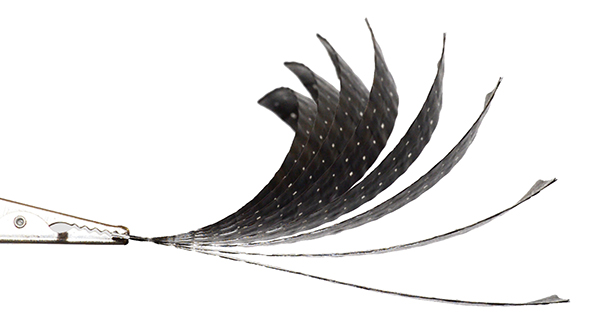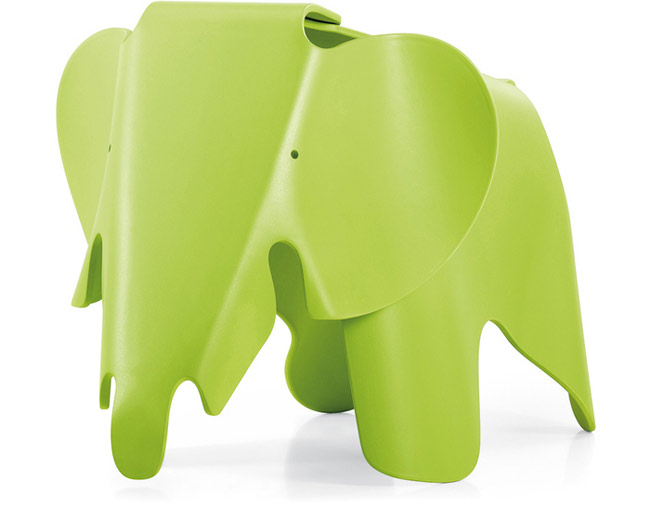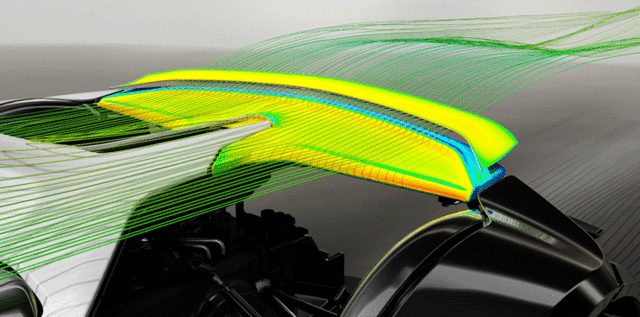[vimeo 108872994 w=650]
“Robots without robots,” is hows it’s been described, inanimate objects that are pre-programmed to shapeshift depending on their environment. Think wrinkled fingertips. Cooked bacon. A shriveled sponge. That’s the science behind Self-Assembly Lab’s “Programmable Materials.” And carbon fiber is at the forefront of this industry-altering innovation.
“The idea here is to take existing material systems like fibres, sheets, strands and three-dimensional objects and program them to change shape and property on demand,” says Skylar Tibbits, director of MIT’s Self-Assembly Lab in a recent interview with WiredUK.

Using a number of recent advances in technology, including breakthroughs in simulation and optimization software, materials science and Self-Assembly Lab’s own update on 3-D printing, coined 4-D printing — which represents their ability to program objects to be more Dynamic — Tibbits and his team have been able to manipulate a wide range of materials to transform on demand.
One of their earliest innovations came in the form of an elephant.

In 1945, Charles and Ray Eames, early American innovators, designed a children’s toy made entirely out of plywood that, thanks to the hours and energy involved, was far too expensive for mass consumption. (They only made a pair of prototypes.)
Sixty-two years later, in honor of the birth of Charles Eames, Vitra, a Swiss furniture company, made both a near-replica, built from maple and red-dyed plywoods, as well as a less expensive — but still expensive — knock-off, built from plastic. Neither were affordable enough to be placed under more than the most expensive Christmas trees. (The former was sold for over $2,000 and the latter for just under $300.)

Fast-forward to 2014, and the Eames elephant has been replicated once again. Only this time, thanks to Self-Assembly’s 4-D printing technique, in which the pattern of the wood grains have been pre-programmed, the elephant starts flat and springs into form as it dries — thus minimizing the overall manpower needed to steam, treat and manipulate the toy into its endearing elephantine shape.
[vimeo 108869811 w=650]
But wood is one thing, and hardly universal, especially when compared to other, more functional materials.
That’s why Self-Assembly sought out Carbitex, pioneers of carbon fiber technology. Together they were able to form sheets of the multi-purpose composite that can curl, bend and fold based on their exposure to the elements.
[vimeo 108391033 w=650]
Praised for its strength, its weight and its dependability, the 4-D printed, “living” material is already garnering interest from the automobile and aeronautical industries. In fact, MIT has already formed a partnership with Airbus to come up with a carbon fiber component that will help reduce drag without the use of any hefty or ornery robotics.
They’re also working with Briggs Automotive Company to help create a self-regulating carbon fiber airfoil, the first of its kind. “The airfoil can change in different weather conditions,” explains Tibbits, in that same WiredUK interview. “So flaps can open up to give them more control or stability in the back, and then they can close down when it gets dry again.”

Self-assembling furniture. Shoes and tires that adapt, depending on the conditions of the road. Autonomous outfits that shift and change with the weather. The use for such technology appears limitless at the moment, going about as far as our imagination will allow, especially with the assistance and applicability of carbon fiber.
Only time will tell where it actually takes us.
[Sources: WiredUK, FastCompany, L.A. Times, Self-Assembly Lab ]